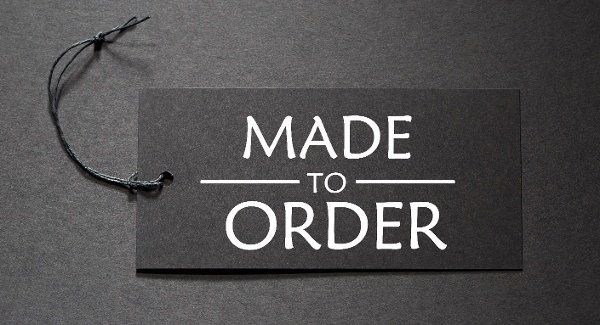A safe harbor 401(k) plan helps small businesses automatically pass annual nondiscrimination tests—avoiding costly issues like ADP/ACP test refunds or top heavy contributions. But not all safe harbor plans are created equal.
Safe harbor 401(k) plans come in two basic types today - traditional and Qualified Automatic Contribution Arrangement (QACA). Both can automatically satisfy IRS nondiscrimination testing but differ in how they approach employee participation, employer contributions, and administrative requirements.
Let’s break down how traditional and QACA safe harbor plans compare—and how recent retirement plan legislation like SECURE 1.0 and SECURE 2.0 might impact your decision when choosing the best safe harbor plan for your business.
What Is a Traditional Safe Harbor 401(k) Plan?
A traditional safe harbor 401(k) plan requires employers to make one of the following contributions to eligible employees:
-
- Basic matching contribution: 100% of the first 3% of deferred compensation, plus 50% of the next 2% (a total match of up to 4%)
- Enhanced matching contribution: Must equal or exceed the basic match formula (e.g., 100% of the first 4% of compensation is common)
- Nonelective contribution: 3% of compensation to all eligible employees, regardless of participation
These contributions must be 100% immediately vested—no vesting schedule is allowed.
An annual safe harbor notice is required when matching contributions are used. There’s no notice required for plans using the nonelective contribution.
What Is a QACA Safe Harbor 401(k) Plan?
A QACA, or Qualified Automatic Contribution Arrangement, is a safe harbor 401(k) plan that includes automatic enrollment—meaning employees are enrolled at a preset deferral rate unless they opt out.
Employers must make one of the following contributions:
-
- Basic matching contribution: 100% of the first 1% of pay, plus 50% of the next 5% (up to 3.5% total)
- Enhanced matching contribution: Must equal or exceed the basic match formula (e.g., 100% of the first 3.5% of compensation)
- Nonelective contribution: 3% of compensation to all eligible employees
QACAs differ from traditional plans in a few key ways:
-
- Employer contributions can follow a 2-year cliff vesting schedule.
- An automatic enrollment notice is required.
A QACA’s automatic enrollment feature must meet the following requirements:
-
- Initial default rate - Must be between 3% and 10% of compensation.
- Rate escalation - Not necessary if the initial rate is 10%. Otherwise, the rate must increase at least 1% annually to no less than 10% (15% maximum).
Key Differences Between Traditional and QACA Safe Harbor Plans
Like QACAs, traditional plans can include automatic enrollment. However, this combination is uncommon due to the more flexible contribution and vesting requirements of a QACA.
Key differences between a non-automatic enrollment traditional plan and a QACA include:
|
Feature |
Traditional safe harbor |
QACA safe harbor |
|
Employee enrollment |
Voluntary |
Automatic, with opt-out |
|
Default deferral rate |
N/A |
Starts at 3%, increases 1% annually |
|
Maximum default deferral rate |
N/A |
10% initial year, up to 15% thereafter |
|
Minimum matching contribution (if used) |
Up to 4% |
Up to 3.5% |
|
Minimum nonelective contribution (if used) |
3% |
3% |
|
Annual notice requirement |
Yes (unless nonelective after SECURE) |
Yes |
|
Vesting for employer contributions |
Immediate |
Up to 2-year cliff vesting allowed |
SECURE 1.0 and 2.0: What Changed and Why It Matters
Recent retirement legislation introduced several changes that affect safe harbor plans. Here's how SECURE 1.0 and SECURE 2.0 come into play:
Mandatory Automatic Enrollment (SECURE 2.0)
Starting in 2025, new 401(k) plans must include automatic enrollment unless an exemption applies. QACAs already meet this requirement by design, which makes them a future-proof option for new plans.
Exempt from the automatic enrollment mandate:
-
- Plans established before December 29, 2022 (the SECURE 2.0 effective date).
- Businesses with 10 or fewer employees.
- Businesses that are less than three years old.
- Church and governmental plans.
No Annual Notice for Nonelective Plans (SECURE 1.0)
Plans using a nonelective contribution no longer need to issue an annual safe harbor notice—reducing administrative burden. This applies to both traditional safe harbor and QACA plans.
More Time to Become a Nonelective Plan (SECURE 1.0)
SECURE 1.0 gave employers more time to convert their plan to nonelective-based safe harbor plan. The applicable deadline depends upon the amount employees will receive:
-
- 3% nonelective contribution: up to 30 days before plan year-end
- 4% nonelective contribution: as late as the last day of the following plan year
This flexibility can help employers respond to changing business conditions without losing safe harbor status.
Which Safe Harbor 401(k) Plan is Right for You?
Choose a traditional safe harbor 401(k) if you:
-
- Prefer a straightforward, opt-in plan design
- Want to avoid automatic enrollment or escalation features
- Are comfortable making larger matching contributions
- Want to skip annual notices by choosing the nonelective option
Choose a QACA if you:
-
- Want to boost participation through automatic enrollment
- Are setting up a new plan in 2025 or later and are subject to SECURE 2.0’s automatic enrollment mandate
- Want a vesting schedule for safe harbor contributions (up to 2 years)
- Want to keep costs a bit lower with a smaller match requirement
Final Thoughts
The best safe harbor 401(k) plan for your business depends on your goals, budget, and workforce. Thanks to SECURE Act updates, employers have more flexibility than ever to tailor a plan design that fits their needs—whether that means reducing administrative requirements, encouraging employee savings, or planning for future compliance.
If you're still not sure which safe harbor plan is best for your company, reach out to us. We’ll help you design a 401(k) plan that’s compliant, cost-effective, and built for your team.





